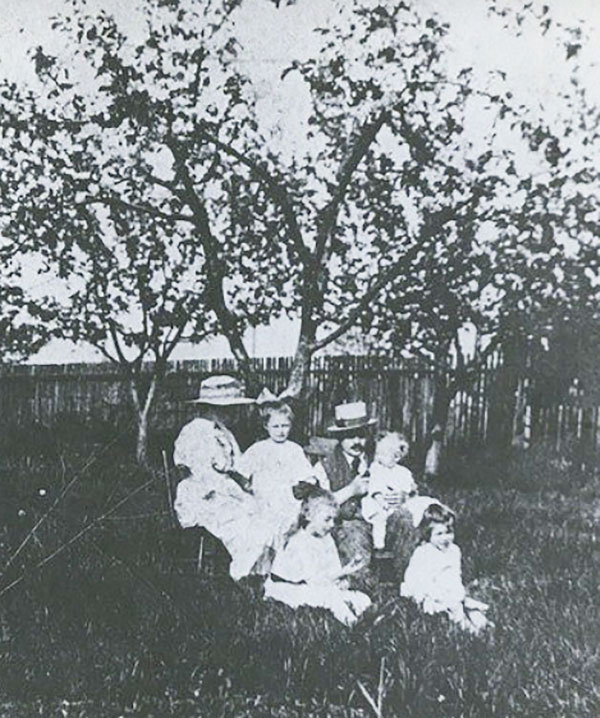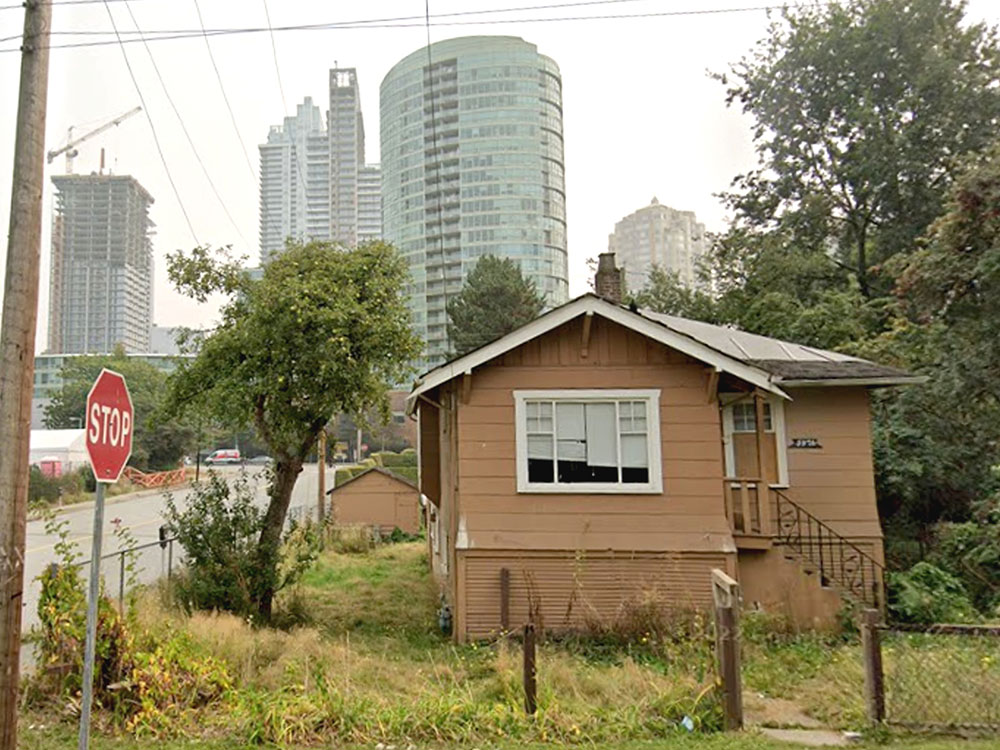This spring, there is no blooming apple tree at the corner of Kemp and Kathleen in Burnaby, B.C. Last fall, big yellow excavators rolled up to the century-old property the tree belonged to and tore the house down. The demolition crew also cut down the tree — which was a rare sight in this part of the city, home to skyscrapers and a supermall.
I must confess, I walked this neighbourhood every week during the pandemic but never noticed the apple tree when it was still standing. Instead, my eyes were distracted by the skyline.
This is Metrotown, Burnaby’s booming downtown. Rather than a forest of trees, it’s home to a forest of towers. The new ones climb to great 50-storey heights, each trying to outshine the others. One looks like it’s clad in sheets of gold. Another is rippled with sea-green curves.
Beneath this pageant of highrises is a supply of low-rise apartments, which are being demolished one by one to make way for the new. Many low-income immigrants and refugees live in these buildings, still hanging on. They rent for cheap — a discount for sleeping under the threat of a wrecking ball.
It’s a lot of tumultuous transformation. But the name of a strip mall on Kingsway and Willingdon, within eyeshot of the felled apple tree, nods to the area’s past: the Old Orchard Shopping Centre was indeed part of a neighbourhood once home to lots of fruit trees.
Before the settlers established Kingsway, it was already a major transportation route. It was a walking path between camps and hunting and gathering grounds, used by a number of Salish peoples including the Skwxwú7mesh, the Tsleil-Waututh, the xʷməθkʷəy̓əm, the Qayqayt, the Kwantlen and the Katzie.
Settlers eyed the ancient route as the perfect place for a tram between Vancouver and New Westminster. The tram opened in 1891 and the population along the line in Burnaby took off.
There were lots of farms in those early decades — but don’t picture stereotypical homesteading families on massive acreages, says Lisa Codd, a heritage planner at the City of Burnaby.
“People weren’t making a living from farming, but supplementing their income,” she told me.
People kept cows and chickens — and even bees, horses, pigs and rabbits — and grew fruits and veggies on small properties, mostly for personal use and bartering with neighbours.
There were some entrepreneurial farmers who took advantage of Burnaby’s central location along Kingsway and the tram route to connect with companies and wholesalers in Vancouver and New Westminster. The Empress Manufacturing Co., for example, who made jam as one of their various products, bought fruit in this part of Burnaby, dropping off pails for pickers to fill up and sending over trucks to pick them up the next day. The popular White Lunch restaurants, known for their racist whites-only policies, also got eggs, berries and cottage cheese from a farmer here.
A book in the city archives called Pioneer Tales of Burnaby, which collects the interviews of children who grew up in those early decades, tells of how green the area was and how much growing took place.
In the words of Maurice Dodge, “For a youngster of nine years from Saskatchewan, it wasn't mountains or ocean but apples, growing right on the trees, that impressed me most when I arrived in South Burnaby in 1923 with my family.”

There were apple trees, but cherries, peaches, pears, plums and walnuts too. A fertilizer plant was nearby and salespeople would sell fertilizer and fruit trees door to door. Berry farms were also popular, and students took jobs picking them for money. Farmers set up stands selling produce and goods like honey and cottage cheese.
You might guess that a book with “pioneer tales” in the title — not to mention a description of how these settlers were “helping transform the wilderness into the modern municipality” — would privilege the settler narrative of colonizing the area.
However, the book also contains glimpses of lives aside from white landowners. Poor families, many from other parts of Canada, started off as renters in Burnaby. During the interwar years, the owner of the auto court on Kingsway, a popular place to rent, kept building new units to keep up with demand.
Chinese workers also made their way into this part of Burnaby. Peddlers rode the tram — to the anger of conductors — to sell fish, carrying them in two-gallon cans on a pole slung over their shoulders. Chinese workers were also employed as fruit pickers.
Fast forward to the urban present and the growing that remains in the Metrotown area relegated to the few backyards that exist.
So what’s the story behind the apple tree that was recently cut down on Kemp and Kathleen?
For the past few months, I’ve been trying to interview two nearby residents, one of whom has lived on Kathleen Avenue for the past eight decades, ever since her parents purchased the house during the Second World War. But a surgery and a hip injury prevented them from sharing their stories with me. A third nearby resident, who declined an interview, did share on Twitter that nobody knew how old the tree was but claimed it was the last one around.
It’s a testament to how fast cities change and stories are lost. But “little bits of history are still around if you look,” Codd the heritage planner tells me.
Ever teared up over a bunch of apples. Here we go. Those are last apples of the last of the original fruit trees of #Burnaby #Metrotown's Old Orchard @ #KathleenForest. Nobody picked them up, but they were delicious. Every year since 2 decades we brought home a bucket. No more. https://t.co/RZ6CgyLRn4 pic.twitter.com/IN9wLfdhkp
— Metrotowner (@metrotowner) December 1, 2021
I found a homage to Metrotown’s green past in a surprising place. Real estate developer Bosa did not respond to my questions about the apple tree, which was chopped down to make way for their tower, with some controversy. However, I did find something curious in the blueprints for the development. On the roof of their 34-storey tower, alongside two Japanese sakuras, five pines and 15 magnolias, four Jonamac apple trees will be planted.
Apple trees will once again grow in this urban forest, albeit at 132 metres above the ground. ![]()
Read more: Urban Planning + Architecture
















Tyee Commenting Guidelines
Comments that violate guidelines risk being deleted, and violations may result in a temporary or permanent user ban. Maintain the spirit of good conversation to stay in the discussion.
*Please note The Tyee is not a forum for spreading misinformation about COVID-19, denying its existence or minimizing its risk to public health.
Do:
Do not: